Bats are some of nature’s most remarkable travelers, with many species undertaking long migrations in search of food and suitable breeding grounds. These fascinating creatures can cover hundreds or even thousands of kilometers, navigating across continents, coastlines, and mountain ranges. Whether they’re chasing nectar blooms or following insect swarms, migratory bats play essential roles in maintaining the health of ecosystems. In this article, we’ll explore several species known for their long-distance journeys, detailing where they travel, what they eat, and the critical role they play in nature’s balance.
Nathusius’ Pipistrelle
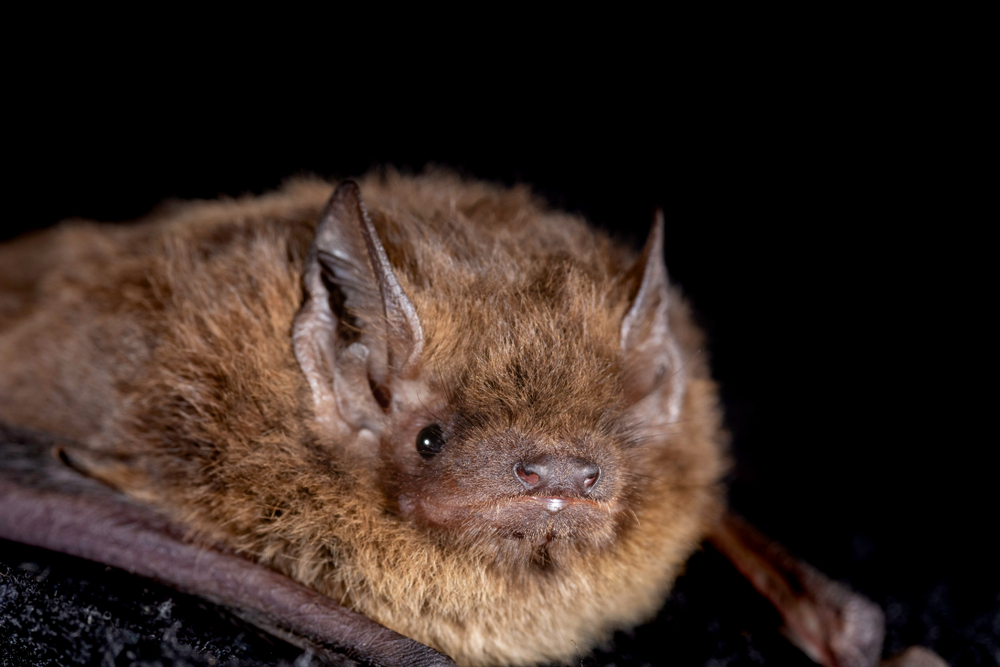
The Nathusius’ pipistrelle (Pipistrellus nathusii) is known for its long migration routes, traveling from its breeding grounds in Northeastern Europe to hibernation sites in Western Europe, covering distances up to 2,000 kilometers. These small bats, weighing around 8 grams, often migrate along coastlines and river valleys, where they feed on insects. Their migration is influenced by changes in temperature and food availability, typically occurring in the autumn. They have been recorded flying at speeds of around 50 kilometers per hour during migration. They also conserve energy by using a combination of flight and gliding to cover vast distances. Researchers have observed that some even fly for as long as 12 days to reach their wintering grounds. This species’ ability to cover such distances makes it a fascinating example of long-distance bat migration. Recent studies suggest that climate change may impact their migration patterns as they adjust to shifting temperatures and food resources.
Straw-Colored Fruit Bat
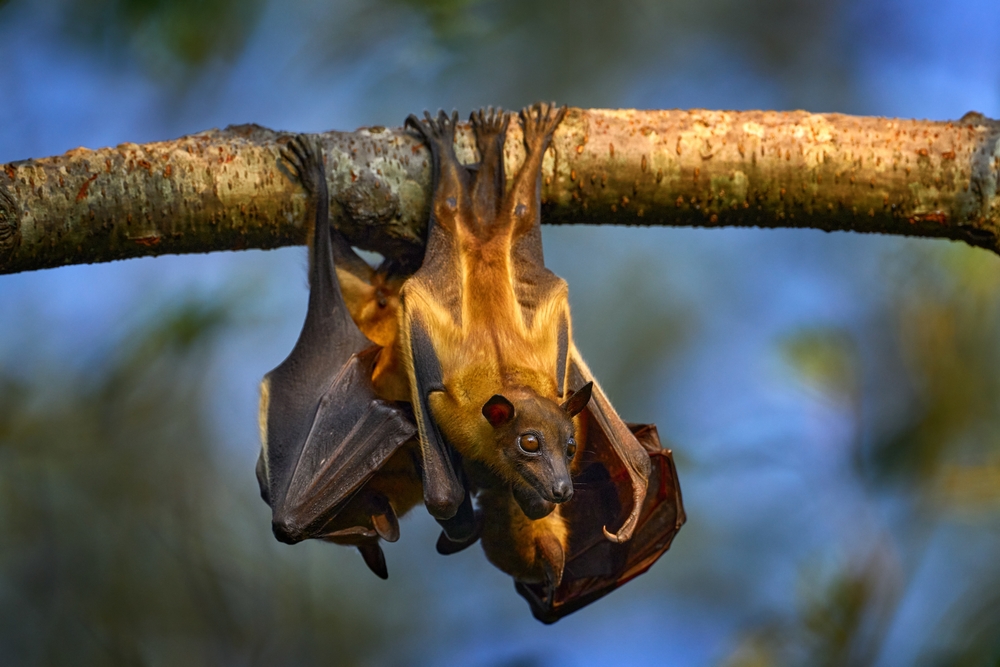
The straw-colored fruit bat (Eidolon helvum) embarks on one of the most impressive migrations, covering up to 2,500 kilometers across Africa. These large bats are found throughout sub-Saharan Africa and are known for their seasonal journeys in search of fruit. Each year, millions of them travel from the forests of Central Africa to Zambia’s Kasanka National Park to feed on wild fruits like figs and mahogany. Weighing about 300 grams, they play a crucial role in seed dispersal as they travel. Their migration is closely tied to the rainy season, with bats moving toward areas where fruit is abundant. While their migration is spectacular, the species faces threats from deforestation and hunting. Efforts to protect their migratory routes are critical to preserving the ecosystems they support. Recent observations have shown that these bats travel in dense groups, creating dramatic night skies filled with flying mammals.
Mexican Free-Tailed Bat
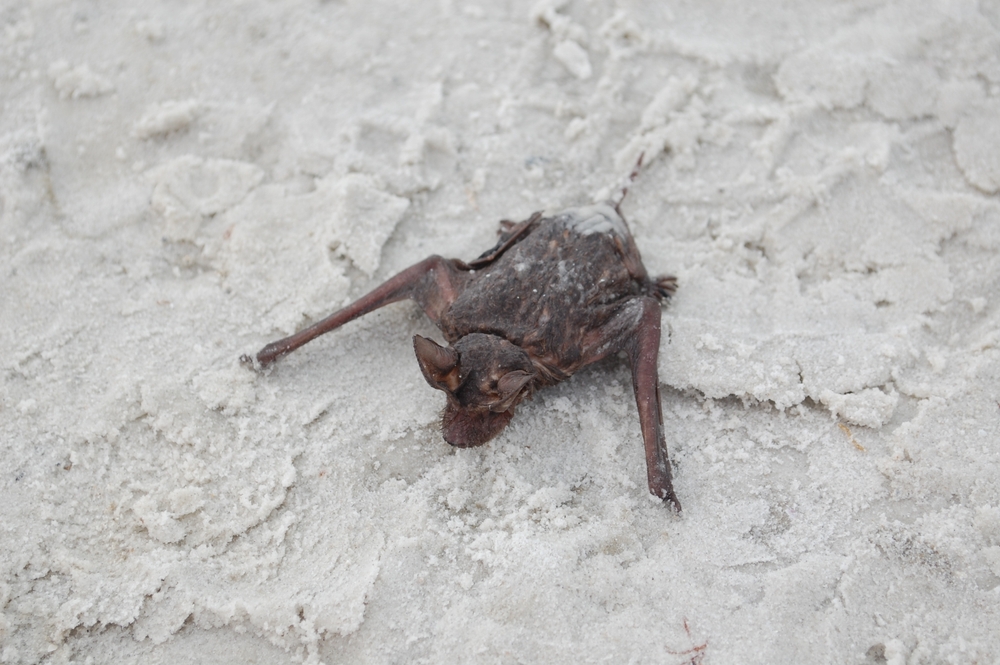
The Mexican free-tailed bat (Tadarida brasiliensis) is renowned for its migratory journeys from Mexico to the southern United States. These bats, which weigh around 12 grams, travel up to 1,200 kilometers to find ideal breeding grounds and feeding areas. They are primarily insectivorous, feeding on a variety of flying insects, including moths and beetles. During migration, they follow warm weather patterns, ensuring that their food sources are plentiful. Bracken Cave in Texas is home to the world’s largest colony of Mexican free-tailed bats, where millions gather during the summer months. Their migratory patterns are influenced by changes in insect populations, with the bats sometimes traveling farther to locate new feeding grounds. They are also known for their speed, flying up to 160 kilometers per hour. The ability to cover long distances quickly allows them to follow seasonal food sources efficiently.
Lesser Long-Nosed Bat
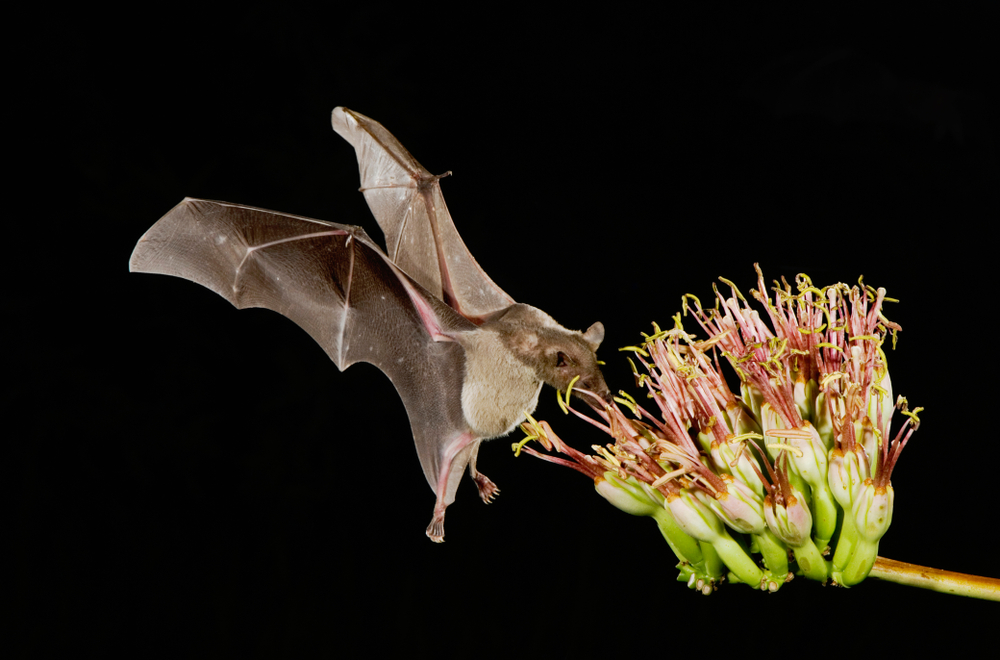
The lesser long-nosed bat (Leptonycteris yerbabuenae) migrates from Mexico to the southwestern United States, covering distances up to 1,000 kilometers. They are nectarivores, primarily feeding on the nectar of agave plants and cacti, including the saguaro and organ pipe. They are vital pollinators in desert ecosystems, ensuring the survival of these plant species. The migration of lesser long-nosed bats is closely tied to the blooming patterns of their food sources, with bats timing their journeys to coincide with the flowering season. During migration, they travel through “nectar corridors” that stretch from southern Mexico to Arizona and New Mexico. They face threats from habitat loss, particularly due to agricultural expansion and the tequila industry, which harvests agave before it blooms. Conservation efforts have been successful in stabilizing their populations, but ongoing habitat restoration is necessary to support their migratory behavior. Some studies indicate that these bats may travel up to 100 kilometers in a single night during foraging.
Hoary Bat
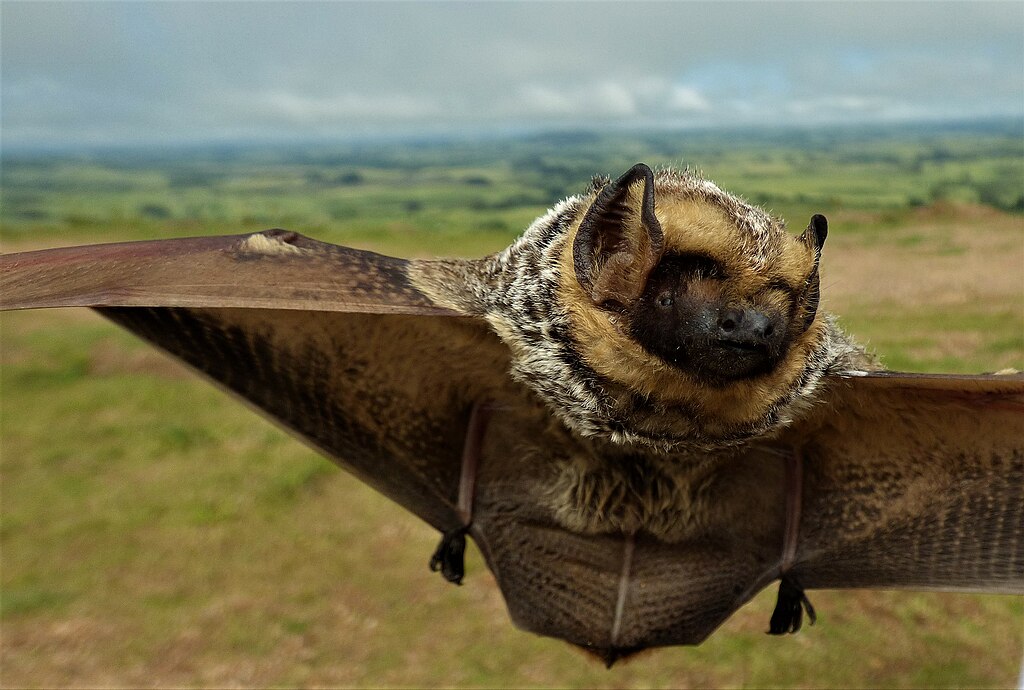
The hoary bat (Lasiurus cinereus) is one of North America’s most widely distributed bat species and undertakes impressive migrations, traveling as far as 2,000 kilometers. These solitary bats are primarily found in forested areas but migrate southward during the fall to avoid colder temperatures. Weighing around 25 grams, they feed on a variety of insects, including moths and beetles. They are known for their distinctive frosted fur, which gives them their name. During migration, they are often spotted flying along the Pacific Coast and mountain ranges, where they follow insect populations. Their migration is solitary rather than in large colonies, and they rely on their keen echolocation abilities to navigate long distances. They are also known to migrate at high altitudes, sometimes as high as 3,000 meters. Recent studies have shown that wind turbines pose a significant threat to migrating hoary bats, with many fatalities occurring during their seasonal movements.
Big Brown Bat
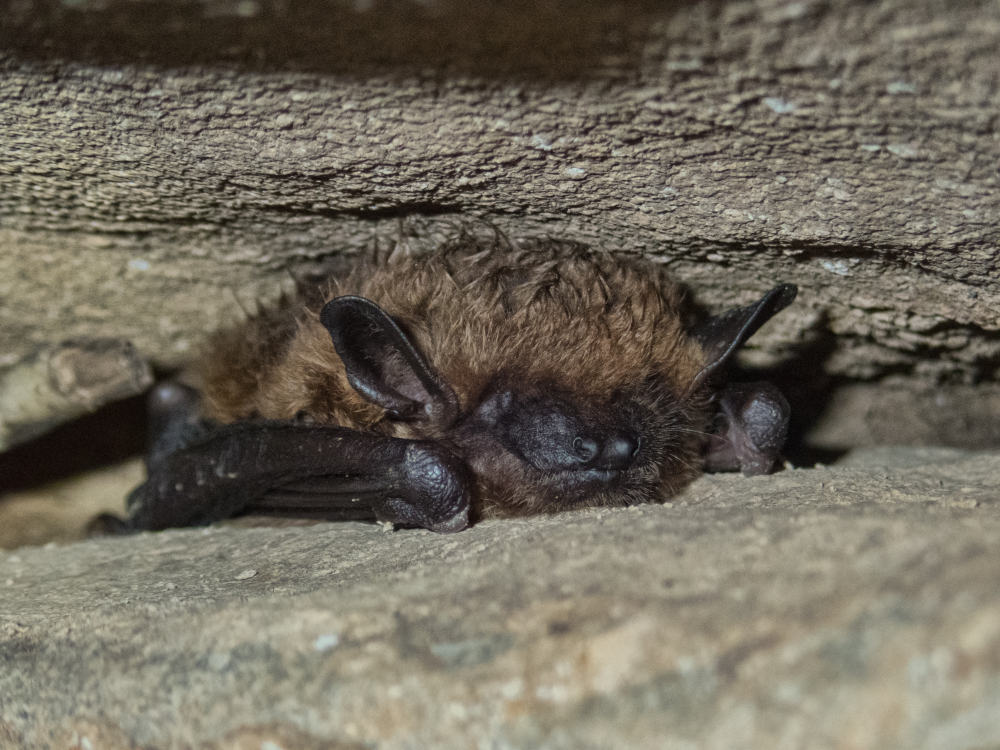
The big brown bat (Eptesicus fuscus) is another North American species known for its long-distance migrations, especially in the northern parts of its range. These bats, which weigh around 18 grams, migrate southward during the fall to avoid cold temperatures, traveling up to 800 kilometers. They primarily feed on beetles and other large insects, making them important for pest control in agricultural areas. Their migratory patterns are less predictable than other species, with some populations hibernating while others migrate. They typically migrate in small groups, often following river valleys and forest edges where food is abundant. They are resilient and can adapt to various environments, including urban areas. Researchers have found that their migration is influenced by changes in weather patterns, with bats migrating earlier in response to warmer temperatures. They are also known to return to the same hibernation sites year after year.
Eastern Red Bat
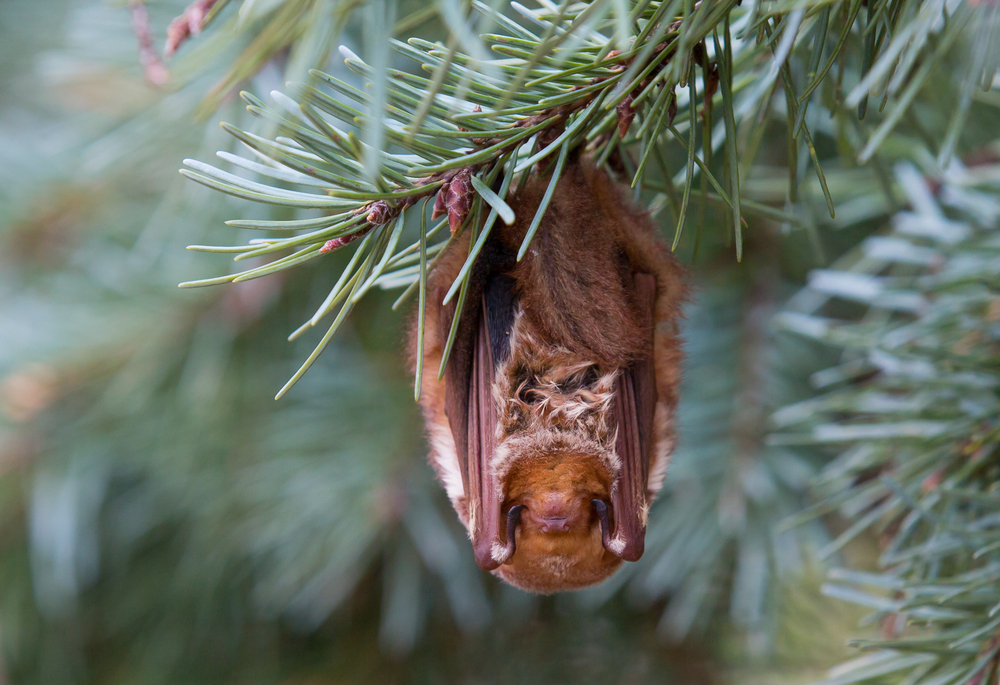
The eastern red bat (Lasiurus borealis) is a migratory species found throughout North America, known for its vibrant red-orange fur. They migrate up to 1,200 kilometers from their northern breeding grounds to warmer southern regions for the winter. Weighing around 14 grams, they feed primarily on moths and beetles. They are solitary migrants, often roosting in trees during the day and traveling at night. During migration, they are known to follow insect swarms, which provide an abundant food source. They are also one of the few bat species that hibernate in leaf litter, making them vulnerable to habitat destruction. Their migration is influenced by changes in temperature and food availability, with bats sometimes traveling farther south in years with colder winters. Conservation efforts to protect forest habitats are critical to ensuring the survival of this species during migration.
Mexican Long-Nosed Bat
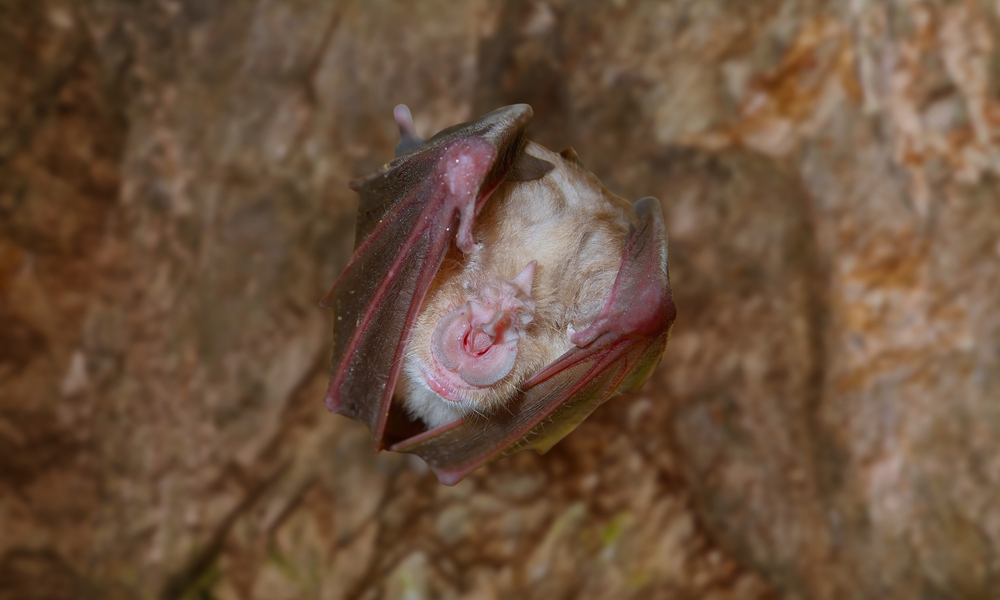
The Mexican long-nosed bat (Leptonycteris nivalis) migrates from central Mexico to the southwestern United States, covering distances of up to 1,000 kilometers. They are nectarivores, feeding on the nectar of agave and cacti species. They play a crucial role in pollinating these plants, which are vital to desert ecosystems. They are listed as endangered due to habitat loss and declining food sources, particularly in agricultural areas. Their migration is closely tied to the flowering of agave, with bats following the blooming plants as they move northward. Conservation efforts have focused on protecting agave habitats and creating wildlife corridors that support bat migration. They are also known to travel up to 100 kilometers in a single night while foraging for food. Researchers continue to study their migration to better understand how to protect their populations during their long journeys.
Common Noctule
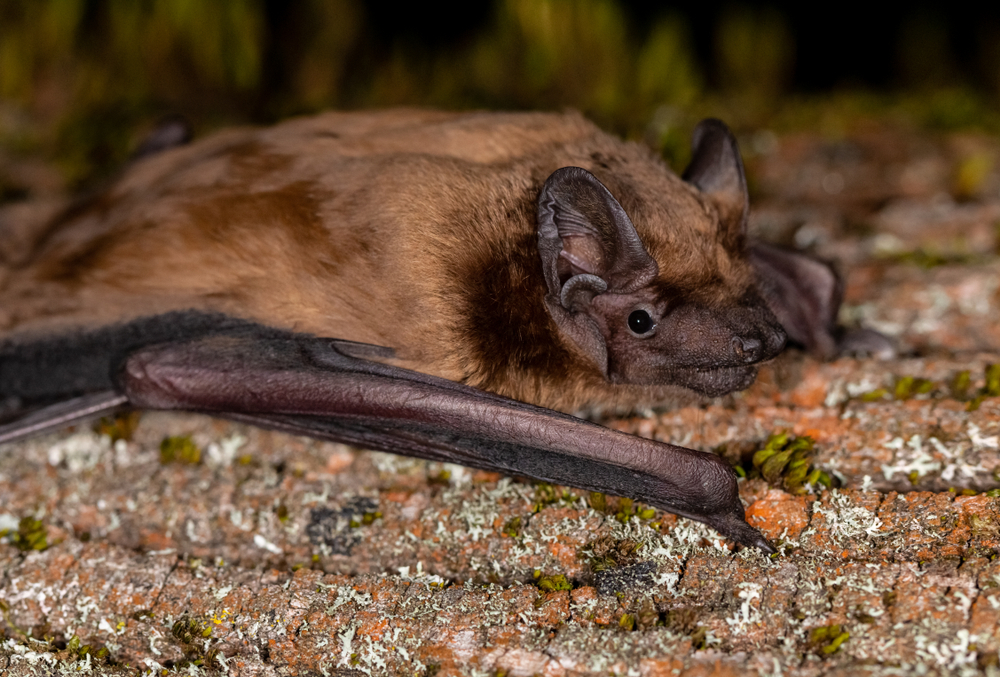
The common noctule (Nyctalus noctula) is one of the largest bat species in Europe, and it is known for its remarkable migratory journeys. They can travel up to 1,500 kilometers from Central Europe to southern regions such as Italy and Spain to escape the cold winters. Weighing around 30 grams, common noctules feed primarily on moths, beetles, and other flying insects, using their powerful wings to cover vast distances. During migration, they often follow river valleys and coastlines, where food is more abundant. Their migration typically begins in late summer, with the bats flying southward in large groups. They are known for their high-altitude flights, sometimes reaching up to 3,000 meters. In recent years, research has shown that wind turbines pose a significant threat to migrating noctules, with fatalities increasing along migratory routes.
Brazilian Free-Tailed Bat
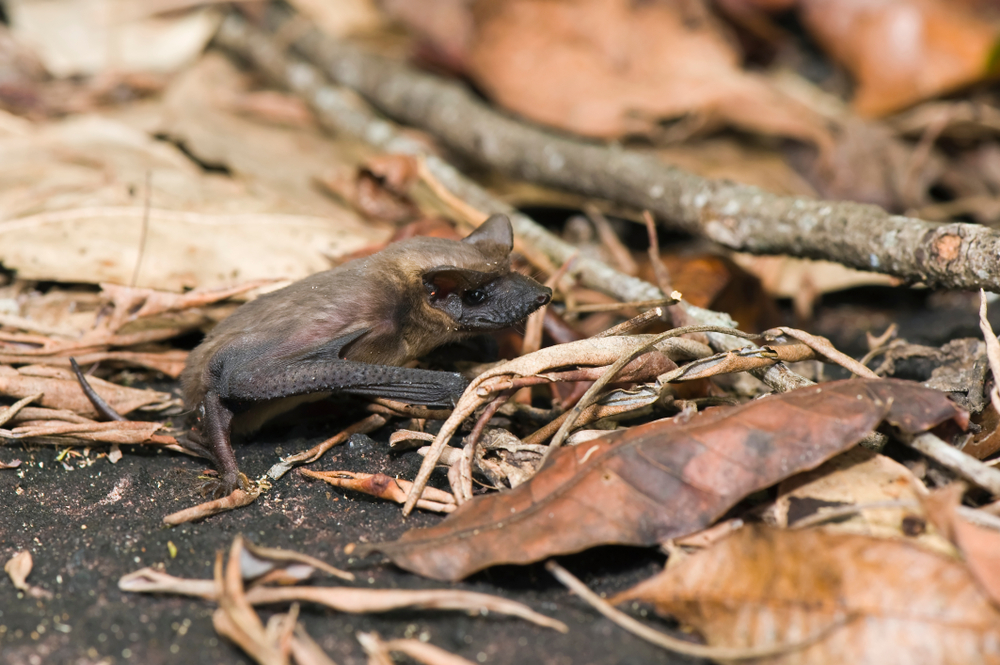
The Brazilian free-tailed bat (Tadarida brasiliensis) is renowned for its speed and long-distance migrations across North and Central America. These bats, which weigh around 12 grams, migrate up to 1,200 kilometers from Mexico to the southern United States, where they breed in large colonies. They primarily feed on flying insects, including moths and beetles, consuming vast quantities during their nightly foraging flights. During migration, they are often seen in massive swarms, particularly around cave systems like Bracken Cave in Texas, home to millions of Brazilian free-tailed bats. Their migration patterns are influenced by seasonal changes in insect populations, with bats moving northward in spring and returning south in autumn. They are known for their remarkable speed, reaching up to 160 kilometers per hour, making them some of the fastest flying mammals. Despite their large numbers, they face threats from habitat loss and pesticide use, which impact their food sources.
Southern Long-Nosed Bat
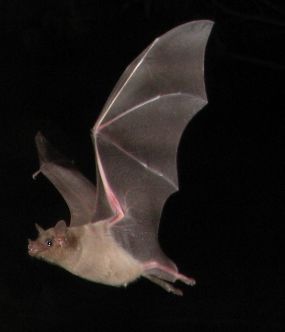
The southern long-nosed bat (Leptonycteris curasoae) is a migratory species found in Central and South America, traveling up to 1,000 kilometers to follow the blooming patterns of agave plants. These nectar-feeding bats are vital pollinators, playing an essential role in the reproduction of desert plants, including the agave used in tequila production. They migrate seasonally between Mexico and the southwestern United States, with some populations traveling as far south as Colombia and Venezuela. Weighing around 20 grams, these bats rely on “nectar corridors” during migration, moving northward in spring and returning south in autumn. Their migration is closely linked to the availability of nectar, with bats timing their journeys to coincide with the flowering of key plant species. Conservation efforts focus on protecting agave habitats and creating wildlife corridors to support the bats during migration. They are also important seed dispersers, contributing to the health and diversity of desert ecosystems.
This article originally appeared on Rarest.org.
More from Rarest.org
19 Most Elusive Classic Motorcycles Ever Made

Classic motorcycles have an undeniable allure, and some of them remain the ultimate trophies for collectors. Their scarcity, groundbreaking engineering, and cultural significance make them highly sought after. Read More.
8 Rare Board Game Expansions Worth a Small Fortune

Board game expansions can add depth and variety to your favorite games, but some rare expansions are worth more than you might expect. These obscure and highly sought-after expansions, often out of print or produced in limited quantities, have gained value over time and are now considered collector’s items. Read More.
20 Graceful Marine Mammals That Glide Through the Ocean`s Depths

The ocean is home to some of the most graceful creatures on Earth. Marine mammals glide effortlessly through its depths, showcasing their beauty and power. Read More.
